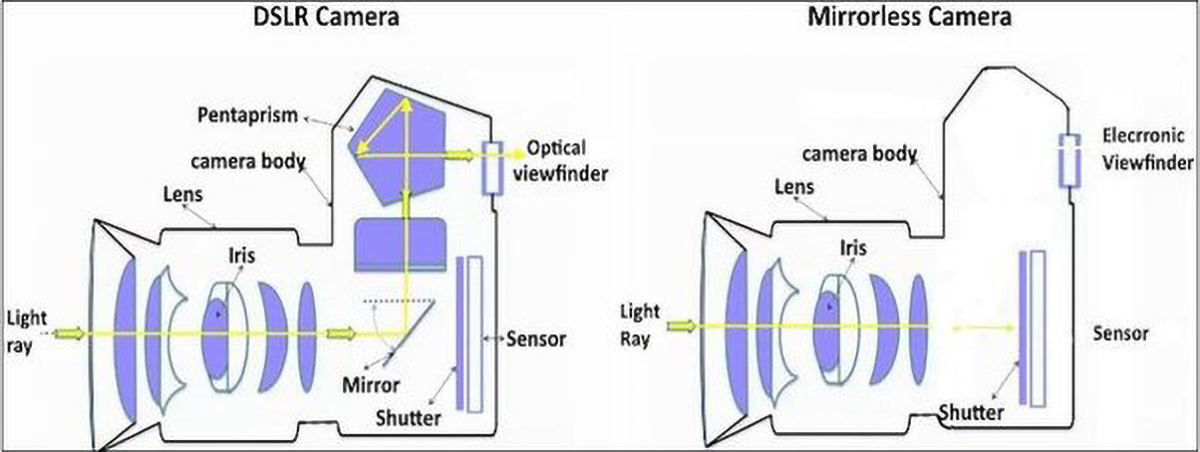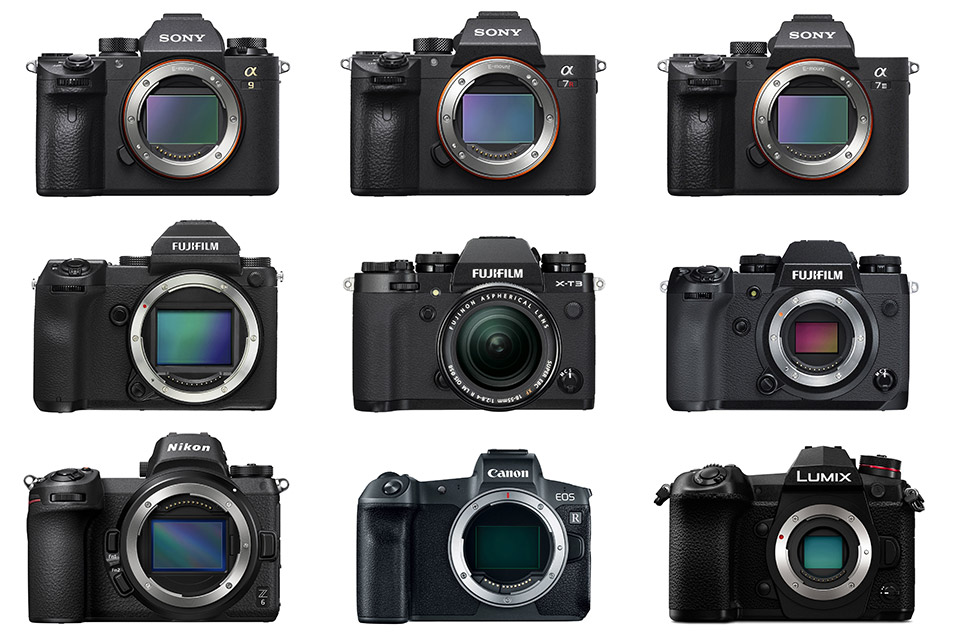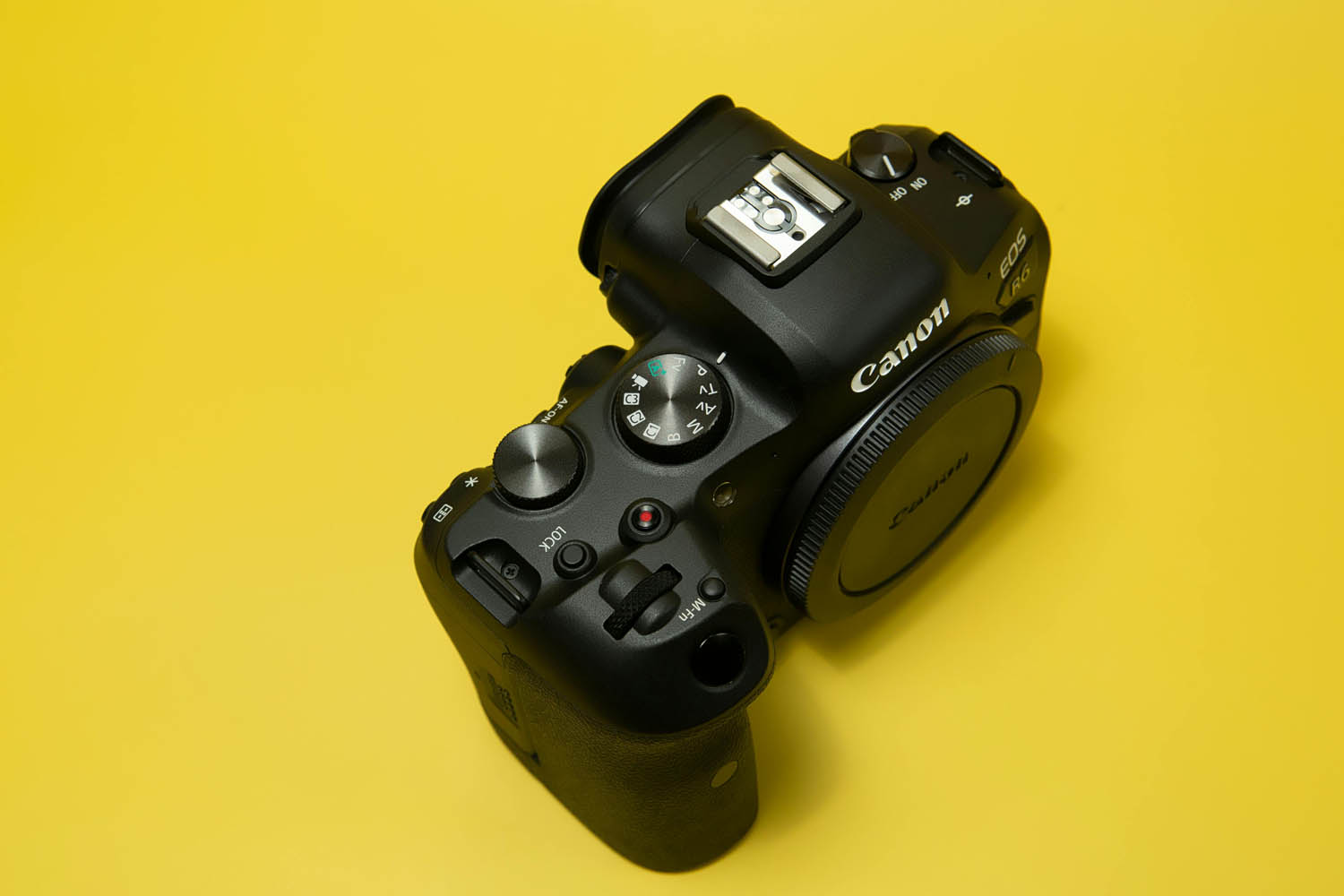In the world of photography, the evolution of camera technology has brought about a significant shift with the advent of mirrorless cameras. Due to their innovative design and advanced features, these compact yet powerful devices have gained popularity among photographers. Let’s delve into the workings of mirrorless cameras with AI enabled, exploring their mechanism and the upgrades.

Understanding the Mechanism
Traditionally, cameras mechanism of mirrors reflect light from the lens to the optical viewfinder which allows the photographers to compose their shots. However, mirrorless cameras have done away with this traditional mirror mechanism. Therefore, the term “mirrorless.” coined. They utilize a digital display system to preview images either through an electronic viewfinder (EVF) or the camera’s LCD screen.

Lens Mount and Sensor
At the heart of every mirrorless camera lies on its lens mount. It serves as the interface between the camera body and the interchangeable lenses. Different camera manufacturers offer various lens mounts. The lenses are designed for specific purposes, from wide-angle landscapes to telephoto wildlife shots.
Behind the lens mount lies the image sensor, which captures the incoming light to create the final image. Mirrorless cameras typically employ either APS-C or full-frame sensors. Full-frame sensors offering superior image quality and better performance in low-light conditions due to their larger size.
Electronic Viewfinder (EVF) and LCD Screen
The EVF functions similarly to an optical viewfinder displays a digital preview of the scene captured by the camera’s sensor in real-time. On the other hand, the LCD screen provides a live view of the scene. It allows the photographers to compose their shots directly on the camera’s display.

Autofocus System
Mirrorless cameras process advanced autofocus systems that rely on a combination of phase-detection and contrast-detection autofocus points. These systems offer fast and accurate focusing, even in challenging lighting conditions or when tracking moving subjects. Some mirrorless cameras also feature eye-detection autofocus, which automatically focuses on a subject’s eyes for stunning portrait shots.
Full Upgrades: Taking Mirrorless Cameras to the Next Level
While the basic mechanism of mirrorless cameras remains consistent across models, manufacturers continually introduce upgrades and advancements to enhance performance and user experience.

High-Resolution Sensors
Full upgradation technology often includes the integration of high-resolution sensors. These are capable of capturing complex details with stunning clarity. These sensors enable photographers to produce images with exceptional sharpness and resolution. They are ideal for printing large-format prints or cropping images without sacrificing quality.
Advanced Autofocus Systems
Upgraded mirrorless cameras feature advanced autofocus systems with improved speed, accuracy, and tracking capabilities. These systems excel at capturing fast-moving subjects, making them well-suited for sports, wildlife, and action photography.

Enhanced Image Stabilization
Many mirrorless cameras now come equipped with advanced image stabilization technology. They resist camera shake to produce sharper images, particularly in low-light conditions or when using telephoto lenses. In-body image stabilization (IBIS) ensures that every shot remains steady, allowing photographers to capture handheld shots with confidence.

Intuitive Controls and User-Friendly Interface
Full upgradation technology extends to the design and usability of mirrorless cameras. The manufacturers focusing on intuitive controls and user-friendly interfaces. Touchscreen displays, customizable buttons, and automatic menus make it easier for novice users to navigate the camera’s settings and functions. It helps them to unleash their creativity without being overwhelmed by technical details.

Conclusion
Mirrorless cameras represent a paradigm shift in the world of photography, offering a compact yet powerful alternative to traditional DSLR cameras. Understanding the basic mechanism of mirrorless cameras, from the lens mount and sensor to the EVF and autofocus system, is essential for novice users looking to explore this exciting technology. With full upgradation technology bringing advanced features such as high-resolution sensors, advanced autofocus systems, and enhanced image stabilization, mirrorless cameras continue to push the boundaries of what is possible in photography, empowering photographers of all skill levels to capture stunning images with ease and precision.
Image credit: Pexels

One Comment